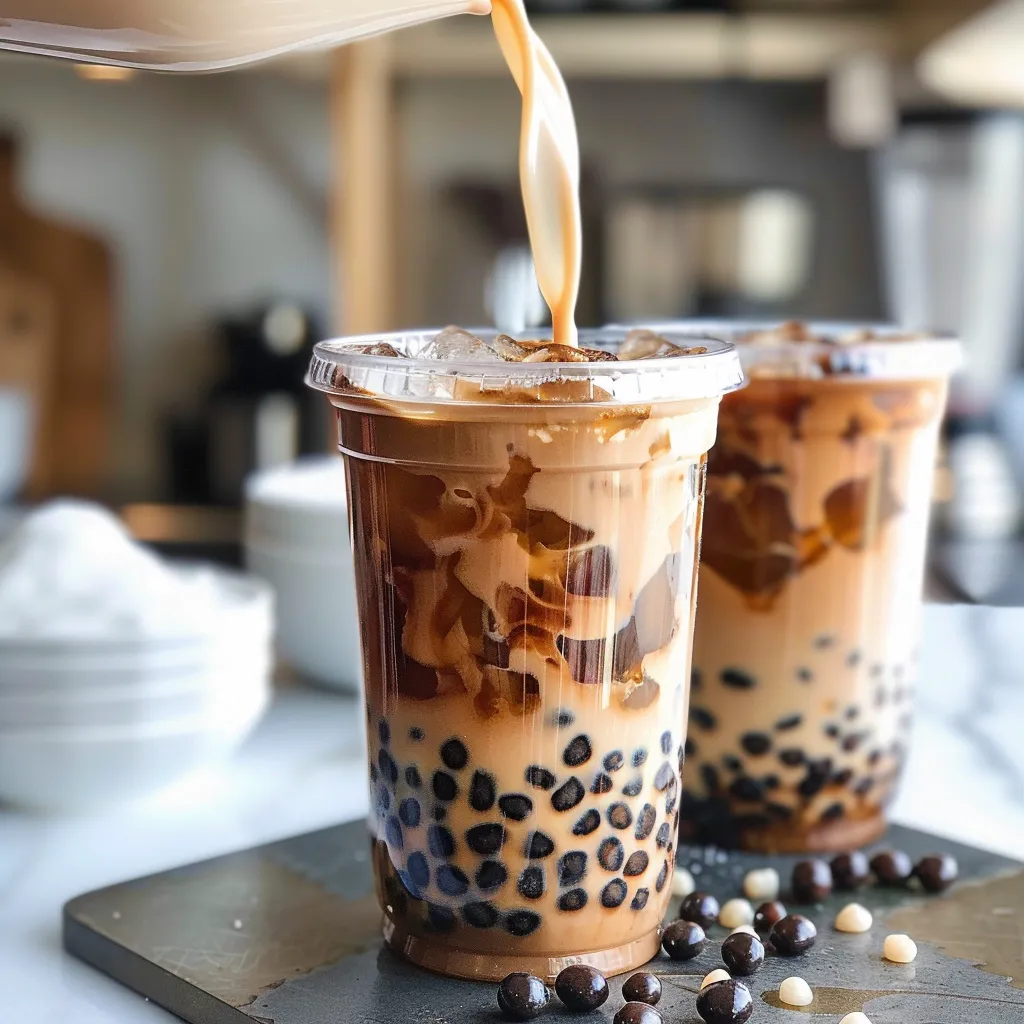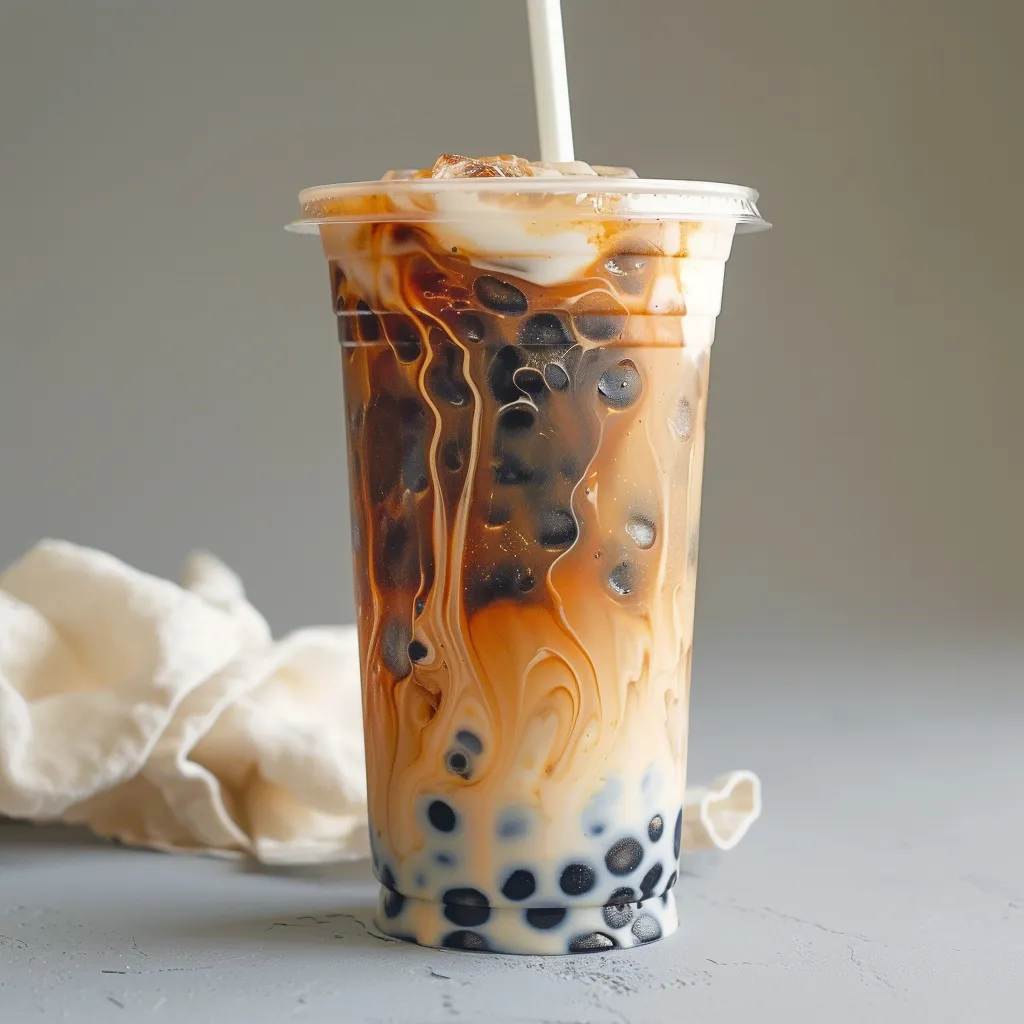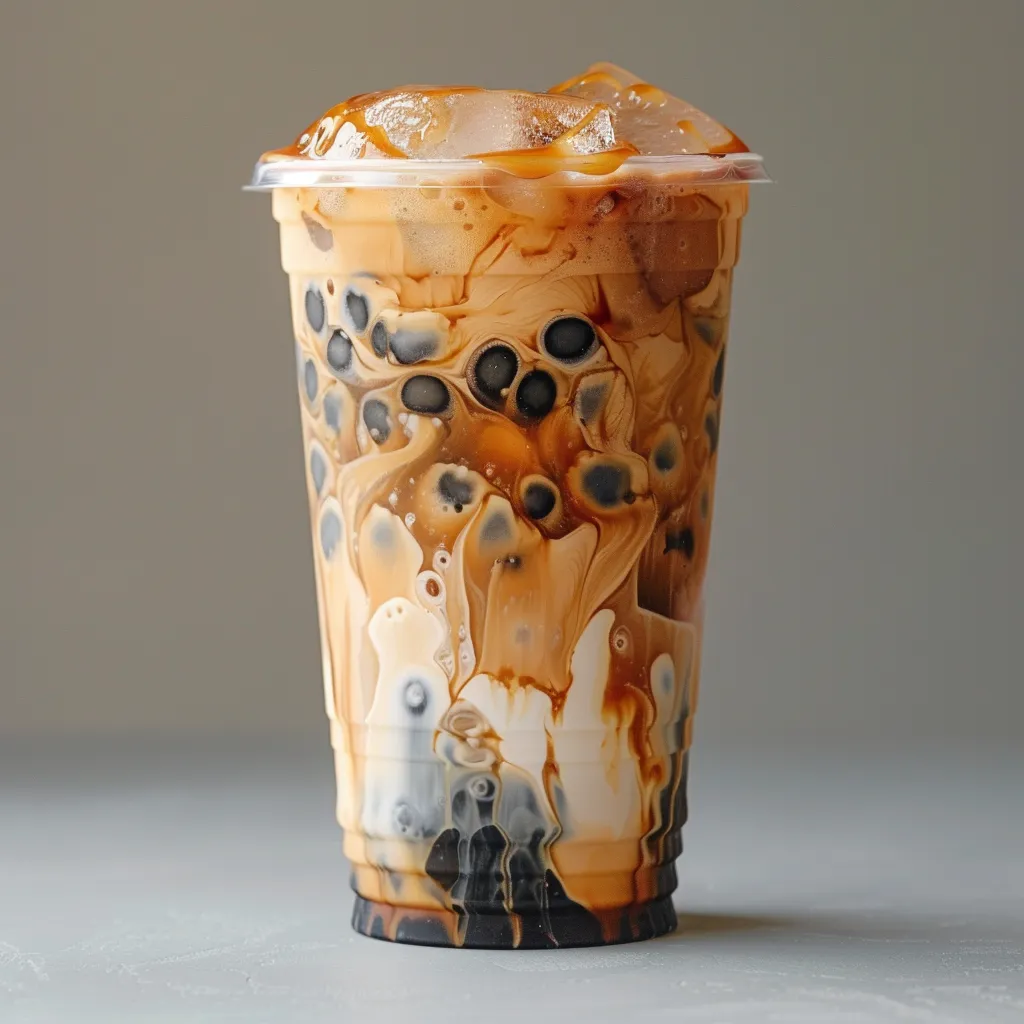 Pin it
Pin it
This refreshing bubble tea recipe brings the coffeehouse favorite right to your kitchen with minimal effort. I discovered this simple method after spending way too much money at boba shops and now make it weekly for a fraction of the cost.
I first attempted homemade bubble tea during college when my boba addiction was draining my student budget. After a few tries, this recipe became my go-to method that friends now request whenever they visit.
Ingredients
- Black tea bags: Essential base providing rich flavor and caffeine; choose quality brands for best results
- Granulated sugar: Balances the robust tea flavor; adjust according to your sweetness preference
- Quick cooking tapioca pearls: The star ingredient giving bubble tea its distinctive chewy texture
- Whole milk or half and half: Adds creaminess; use dairy alternatives like oat milk for vegan version
- Ice cubes: Essential for the refreshing cold experience; use filtered water for purest taste
- Large boba straws: Wide enough to accommodate the tapioca pearls; look for reusable options
Step-by-Step Instructions
- Brew the Perfect Tea Base:
- Bring water to just below boiling point around 200°F as boiling water can make tea bitter. Add tea bags and sugar while water is hot, allowing the sweetener to dissolve completely. Let steep until room temperature for fullest flavor development; typically 30 to 45 minutes. The patience here pays off with richer taste.
- Cook the Tapioca Pearls:
- Time this step about 15 minutes before serving as pearls harden when sitting too long. Use plenty of water in your pot at a rolling boil before adding pearls. Stir immediately to prevent clumping. Watch carefully as they cook for 5 to 7 minutes until they float and develop that signature chewy texture. Rinse under cold water to stop cooking process and prevent sticking.
- Assemble Your Bubble Tea:
- Start by dividing cooked pearls between glasses, adding them first to ensure they stay at the bottom. Add ice cubes generously to chill the drink thoroughly. Pour the room temperature tea over the ice, filling about three quarters of the glass. Top with your preferred amount of milk starting with 2 to 3 tablespoons and adjusting to taste. Stir thoroughly to blend all components and taste for sweetness.
 Pin it
Pin it
The quick cooking tapioca pearls are my favorite discovery when perfecting this recipe. Unlike traditional boba that can take up to an hour to cook, these quick versions deliver the same chewy satisfaction in just minutes. My family now has a Sunday bubble tea tradition where everyone customizes their own flavor combinations.
Storing Leftover Components
The brewed tea base stores beautifully in the refrigerator for up to 3 days in an airtight container. This makes preparation even quicker when the craving strikes. Simply pull out your pre-made tea and assemble in minutes. The cooked tapioca pearls, however, have a much shorter lifespan. They become hard and unpleasant after just a few hours, so I recommend only cooking the amount needed for immediate consumption. If you must store them, keep in a small container with a bit of the sugar syrup to maintain softness, but expect textural changes.
Flavor Variations
Traditional bubble tea has endless possibilities for customization. For fruit versions, add 1-2 tablespoons of fruit puree or syrup to your finished drink. Mango, strawberry, and passion fruit work beautifully. For a more decadent treat, try adding a tablespoon of chocolate syrup or caramel sauce. Coffee lovers can replace half the tea with strong cold brew for a caffeinated twist. Experiment with different tea bases too; jasmine or oolong create entirely different flavor profiles while maintaining that authentic bubble tea experience.
Cultural Context
Bubble tea originated in Taiwan during the 1980s and has since become a global phenomenon. The name comes from the bubbles formed when shaking the drink to mix ingredients, not the tapioca pearls themselves which are often called "boba" in Western countries. Traditional Taiwanese versions often use stronger tea bases and less sweetener than Western adaptations. The wide straws were specifically designed to allow the chewy pearls to pass through, creating the unique drinking experience that combines beverage and snack. This recipe maintains the spirit of traditional bubble tea while simplifying the process for home preparation.
Success with bubble tea ultimately depends on properly cooked tapioca pearls. The pearls should be chewy but not tough; a texture often described as "QQ" in Taiwan, meaning springy and bouncy. If your pearls turn out too hard, they likely need longer cooking time. Conversely, overcooking makes them mushy and unpleasant. The quick test is to bite one; if there's resistance but it yields pleasantly, they're perfect. Some recipes call for soaking cooked pearls in simple syrup, which adds sweetness and maintains their soft texture longer. For an authentic touch, try brown sugar syrup instead of plain sugar for a deeper molasses flavor that complements the pearls beautifully.
 Pin it
Pin it
With these tips, you can enjoy perfectly customized bubble tea at home—cheers to recreating your favorite drink in a fraction of the time and cost!
Frequently Asked Questions
- → What type of tea is best for bubble tea?
Black tea is traditionally used for bubble tea, but you can also experiment with green tea, matcha, or jasmine tea for unique flavors.
- → How do I prevent tapioca pearls from sticking together?
Stir the pearls immediately after adding them to boiling water and ensure they are cooked properly before draining and rinsing under cold water.
- → Can I use a different sweetener instead of sugar?
Yes, you can substitute granulated sugar with honey, agave syrup, or your preferred sweetener. Adjust to taste accordingly.
- → What milk options work best in bubble tea?
You can use whole milk, half-and-half, almond milk, oat milk, or coconut milk based on your dietary preference or flavor preference.
- → How do I store leftover cooked tapioca pearls?
Cooked tapioca pearls are best consumed fresh but can be stored in a simple syrup (water and sugar) in the refrigerator for up to 24 hours.
- → Can I adjust the sweetness of the tea after assembling?
Yes, you can stir in additional sugar or sweetener until you reach your desired sweetness. Mix well to dissolve.
